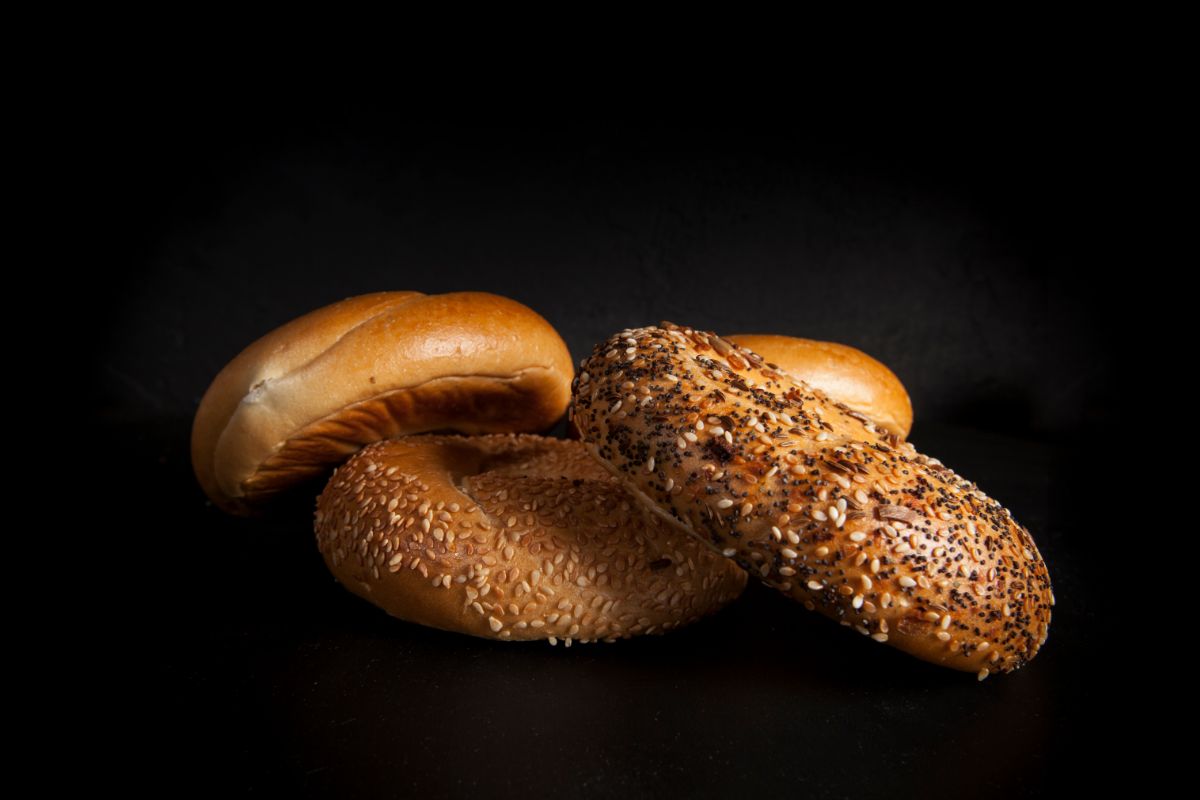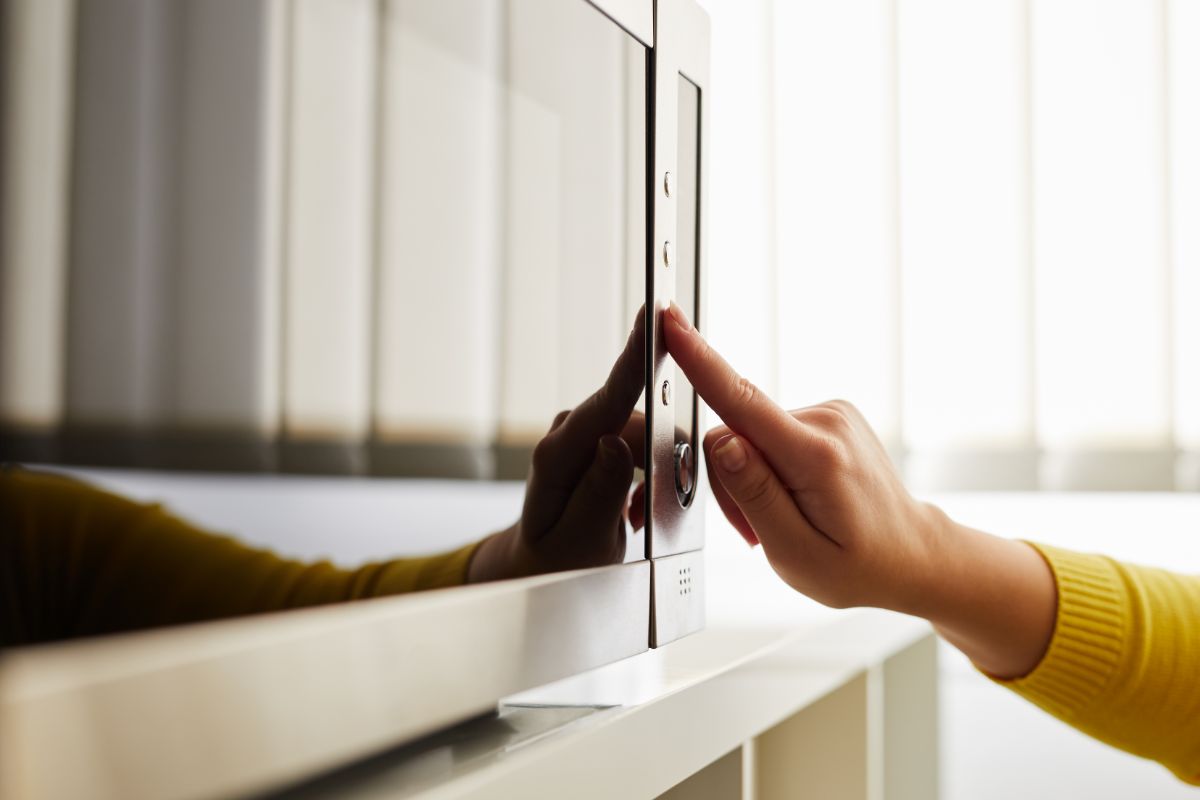It can be pretty difficult to defrost any baked food products, including bread. You have to be very careful to make sure that you do not lose any of the fluffy, airy texture, while maintaining the crunchy exterior. Bagels, for example, can be difficult to thaw.

They can be left to defrost in the refrigerator, but this will take over 24 hours. Who has the time to wait that long? In this guide, we will teach you all you need to know about defrosting a bagel in the quickest and most convenient way possible: using a microwave (for the best way to microwave bagel bites, read here). So, let’s get into it.
Is It Possible To Defrost A Bagel In A Microwave?
You will be glad to know that a frozen bagel can be defrosted in a microwave. One of the quickest and most effective techniques to defrost a bagel is to do this.
You could always allow it to thaw for up to 24 hours in the refrigerator, but this isn’t the fastest way to defrost a bagel. Using a microwave effectively can yield some excellent results and is quick and easy.
A little effort and caution are needed, nevertheless, while microwave-defrosting bagels. Bagels might become burned and brittle if they aren’t thoroughly defrosted. This is the reason why it is crucial to thoroughly comply with the directions.
However, defrosting a bagel at room temperature will take longer than doing it in the microwave. Among the most crucial considerations to make when defrosting your bagel in the microwave is the power level.
You will get a scorched and brittle bagel if you zap it at maximum throttle. It is crucial that you utilize the defrost setting or reduce the power to 50%. We advise defrosting your frozen bagels overnight at room temperature if you don’t want to bother with the above issues.
This defrosts them more quickly while requiring minimal maintenance. In fact, you would probably end up with better results by using this method. However, if you are rushed for time, you would be best using a microwave to speed things along.
Will Defrosting A Bagel In A Microwave Affect The Quality?
Several individuals are concerned that a frozen bagel would turn out mushy, flaky, or excessively waterlogged in the microwave.
This is a possibility if you do not take care while defrosting your bagel, and these textures will occur as a result of the bagels’ interior moisture crystallizing during freezing and hardening.
All of the ice crystals should dissolve after they have been toasted in the microwave for an excessive amount of time or at a higher temperature and pressure, leaving you with a dried, crumbly bagel.
For the vast majority of individuals, this is typically a significant problem, although with some caution, you can completely thaw the bagel in your microwave without it having any unusual textures as a result.
However, you should keep in mind that the exterior of a bagel cannot be crisped, toasted, or browned in a microwave. In order to make your bagel truly crispy on the outside, you will need to toast it separately.
We recommend that you toast the bagel in a toaster oven, or even on a grill. Just be sure to keep a close eye on it as it toasts to ensure that it doesn’t burn or blacken under the heat; you want the exterior to be crispy, not scorched.
How To Successfully Defrost A Bagel In A Microwave?
Before you slap your bagel on a plate and slide it into the microwave, there are a couple of things that you will need to know. Here is how to successfully defrost a bagel in a microwave.
Getting The Timing Right

The first thing that you will want to take into consideration when successfully defrosting a bagel is that timing is everything. Unfortunately, it will not be as simple as placing the bagel in the microwave and leaving it to heat up for a couple of minutes.
The method employed to defrost the bagel and the amount being defrosted at once mainly impact how quickly a frozen bagel warms up. Nevertheless, using a microwave to thaw food typically takes around a minute or two, split up into 30 second intervals.
In comparison, it will take a few hours to thaw bagels in the refrigerator or at room temperature, or roughly 15 to 20 minutes in an oven. Using a microwave will significantly cut your time down.
The frozen bagel should naturally break in half after the first 30 seconds. It should be disassembled, spread out on a microwave-safe plate, then re-sprinkle with water to keep it moist.
After separating the bagels, re-microwave them, making sure to turn them over, for a further 15 to 30 seconds. Continue warming up for 30 second intervals until the bagel has completely unfrozen.
It is crucial to ensure that you warm your bagels in intervals, since the process will stop the microwave from sucking all the humidity out of them as they defrost. Also, it will stop hotspots from developing on the bagel, which might make some pieces rough and brittle.
As we previously said, you might want to refrain from reheating frozen bagels for periods greater than 30 seconds. The structure of the bagel will be damaged if you microwave it for longer than one minute, since the bagel will begin to become gritty and tough.
Add A Little Water To The Bagel
Another important aspect that is crucial to remember while defrosting a frozen bagel in the microwave is to keep is as moist as possible. When heating up food in a microwave, a lot of moisture will get drawn out, evaporating into the air.
When a bagel loses its moisture, it becomes hard and grainy. This is unappetizing, and not what most people want when they bite into a bagel. Bagels should be fluffy on the inside, and only crisp on the outside.
You can avoid losing the moisture in a bagel while defrosting by adding a little water. After the first 30-second interval, pull it out of the microwave, and sprinkle some water over both halves. You don’t want to drench the bagel, but you want to add enough to give it some wetness.
Alternatively, you could grab some paper towels and lightly soak them in some water. Then, wrap each half of the bagel in a wet paper towel, and continue heating in intervals. This will not only trap the remaining moisture within, but it will also add some wetness.
Use A Low Setting
We briefly mentioned this earlier, but the heat employed while defrosting a bagel is very important. This means that you will need to take the microwave’s heating settings into consideration.
The duration required to thaw your bagels can differ tremendously from microwave to microwave, because microwave ovens are highly diverse from one another. For instance, a microwave with 1000 watts will defrost food more quickly than one with 800 watts.
You will want to set your microwave to the lowest setting, preferably at 30% power. Alternatively, you could simply use the defrost setting to thaw your bagels.
Since the food will heat excessively quickly if you leave your microwave too high, it’s recommended to use a low setting. As a result, the bagels will become crusty and taste terrible, since every bit of water will have evaporated.
Add Butter To The Bagel
We also mentioned earlier that, while it is possible to maintain the moisture in your bagel to keep it soft on the inside, it is almost impossible to make it crispy while heating it inside a microwave. The best way to make it crispy is to toast it separately after defrosting.
However, there is a way to add a little crispness while heating in the microwave. You can do this by adding a little bit of butter to the bagels once they have completely thawed.
Once you have added the butter, set the microwave to the highest setting, and allow the bagels to heat for only 10 seconds; no longer than that duration. While the bagels will not be as crispy as they would be if they had been toasted, they will be comparatively crispier than they were previously.
Final Thoughts
While this is, by far, the fastest way to defrost a bagel, this method requires a lot of care and patience. Once slip up, and you will end up with a rock-hard bagel that will break your teeth!
Remember to use a low setting, and always heat the bread during 30-second intervals. To maintain the moisture in the bagel, have some water on hand to sprinkle on during intervals, or use a soaked paper towel to wrap around each half. We hope you found this guide helpful.
- How To Reheat A Cheesesteak - November 5, 2023
- What Are Three Must Have Kitchen Knives? - September 22, 2023
- How To Protect Edges Of Pie Crust - June 15, 2023








